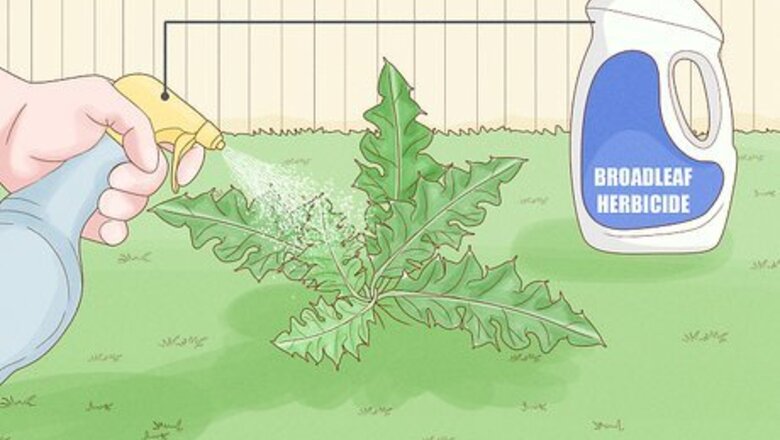
views
Spray herbicide on the infestation.
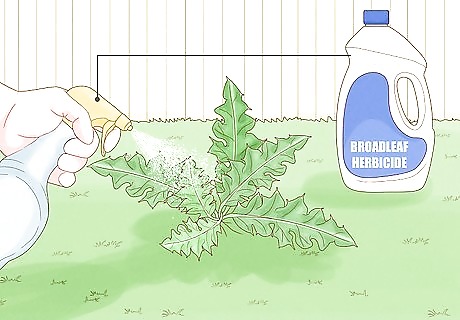
It’s the most effective way to kill Canadian thistle. Start by spraying a broadleaf herbicide on the thistle patch in the early spring before it has a chance to flower. Follow up with a second application in the late fall to kill the roots. Look for an herbicide with aminopyralid, glyphosate, or chlorsulfuron on the ingredients list. Herbicides are dangerous chemicals, and they can cause irritation. Always read the warning label on your bottle of herbicide, and wear gloves and eye protection to stay safe.
Pull the thistle by hand if it isn’t flowering.

Make sure you get the entire root system out as you pull. If the thistle isn’t flowering, put on a pair of gloves and gently tug the entire plant upward by the stem. If the thistle is flowering, pulling it out will only spread the seeds, so you should pick a different method. If you pull the thistle and it doesn’t have any flowers on it, you can throw the stems in with your compost pile or yard debris bin. If you accidentally pull a thistle that has flowers on it, bag it and take it away to be burned. Flowering thistles can spread seeds even if they aren’t in the ground.
Mow the thistle with a lawn mower.
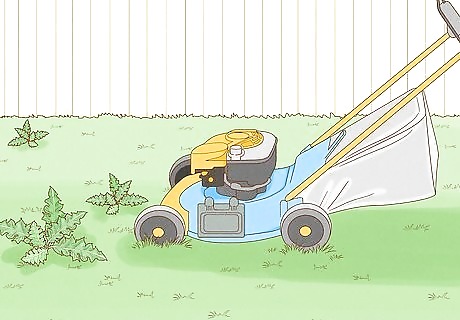
Large infestations will need multiple mows to get them under control. Do an initial mow in late June to catch the thistle before it starts flowering. As the thistle regrows, you’ll have to mow it again throughout the late summer to keep it from spreading seeds. After using your mower on thistle, inspect it carefully and clean it off. If there are any seeds stuck to your mower, bag them and burn them.
Introduce goats to graze if the thistle is young.
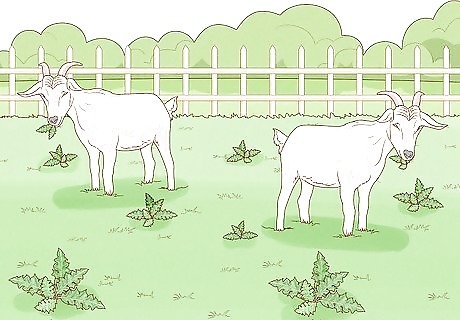
Goats can eat the seedlings and help thin the infestation. Try to bring the goats in during early spring before the seeds start to spread. They’ll chomp the seedlings down and keep them from flowering. Like mowing, you may have to allow your animals to graze multiple times throughout the year to keep the thistle from flowering. Goats are the most effective at grazing, but sheep, cattle, horses, donkeys, and llamas will also eat it.
Till the soil.
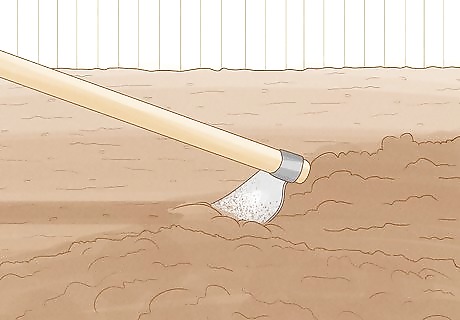
Deep tilling will destroy the thistle’s roots. Use a hoe to till the soil at least 4 in (10 cm) deep and remove the majority of the thistle. This works best on young plants that aren’t flowering yet, so try this out on young, thin patches. It’s important to till as far down as you can. Shallow tilling will actually encourage the spread of Canadian thistle. On its own, tilling isn’t a very effective method. It works best when you follow up with an herbicide application.
Thin the thistle out with a prescribed burn.
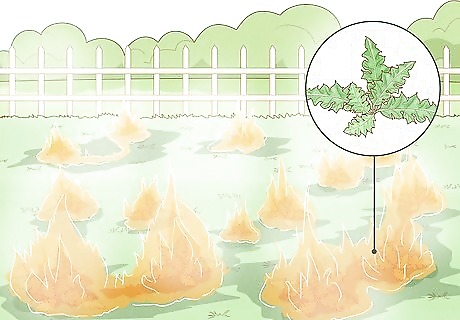
Large patches might need to be thinned before you can tackle them. Contact a local fire team in your area to come out and set fire to the thistle patch. Follow up a few months later with a second controlled burn if you need to. Controlled burns don’t work very well on their own. They’re most effective when you follow up with an herbicide application. Never try to do a controlled burn on your own without the supervision of a professional.
Check hay and straw for weed seeds.
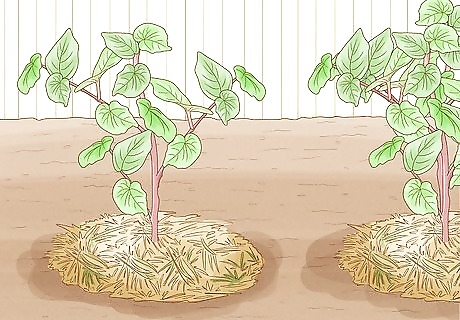
With Canadian thistle, prevention is key. If you purchase hay and straw, make sure it’s certifiably weed-seed free before you bring it onto your property. If you aren’t sure, check the bales and make sure you aren’t introducing Canadian thistle (or any other weeds) into the area. Canadian thistle seeds are brown and only about 1 mm (0.039 in) wide. They can be hard to distinguish from other seeds, so if you spot any seeds at all in your hay or straw, don’t bring it onto your property.
Plant perennial grasses in barren areas.
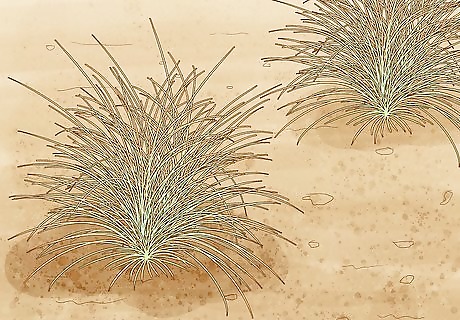
Canadian thistle grows easily in barren patches of land. If you have an area on your property that’s mostly dirt, throw some grass seeds down and let them take root. The thistle will have a harder time rooting and growing in an area that already has plants in it. Try planting switchgrass, fountain grass, or reedgrass.
Release weevils and beetles in the area.

There are a few species of insects that will eat Canadian thistle. Cassida rubiginosa, Rhinocyllus conicus, Trichosirocalus horridus, and Urophora cardui are all natural predators of Canadian thistle. However, you need to get a permit through the US Department of Agriculture before you use this method. Once you get your permit, the USDA can point you in the direction of a seller. Some species of insects might be more suited for areas than others. It’s important to get a permit and check with your local laws before using a biological control method.
Report Canadian thistle to your local government.

They can help you come up with the best strategy for removal. They might even be able to give you a grant or assistance. If you’re out and about and happen to see it, tell them exactly where it is so they can go out and treat it. Once Canadian thistle is established, it’s really hard to get rid of. Prevention and early treatment are key.



















Comments
0 comment